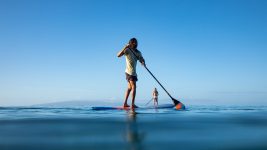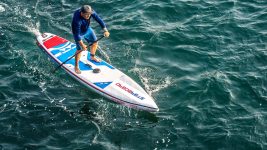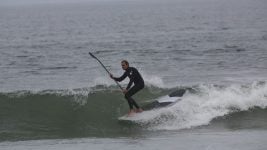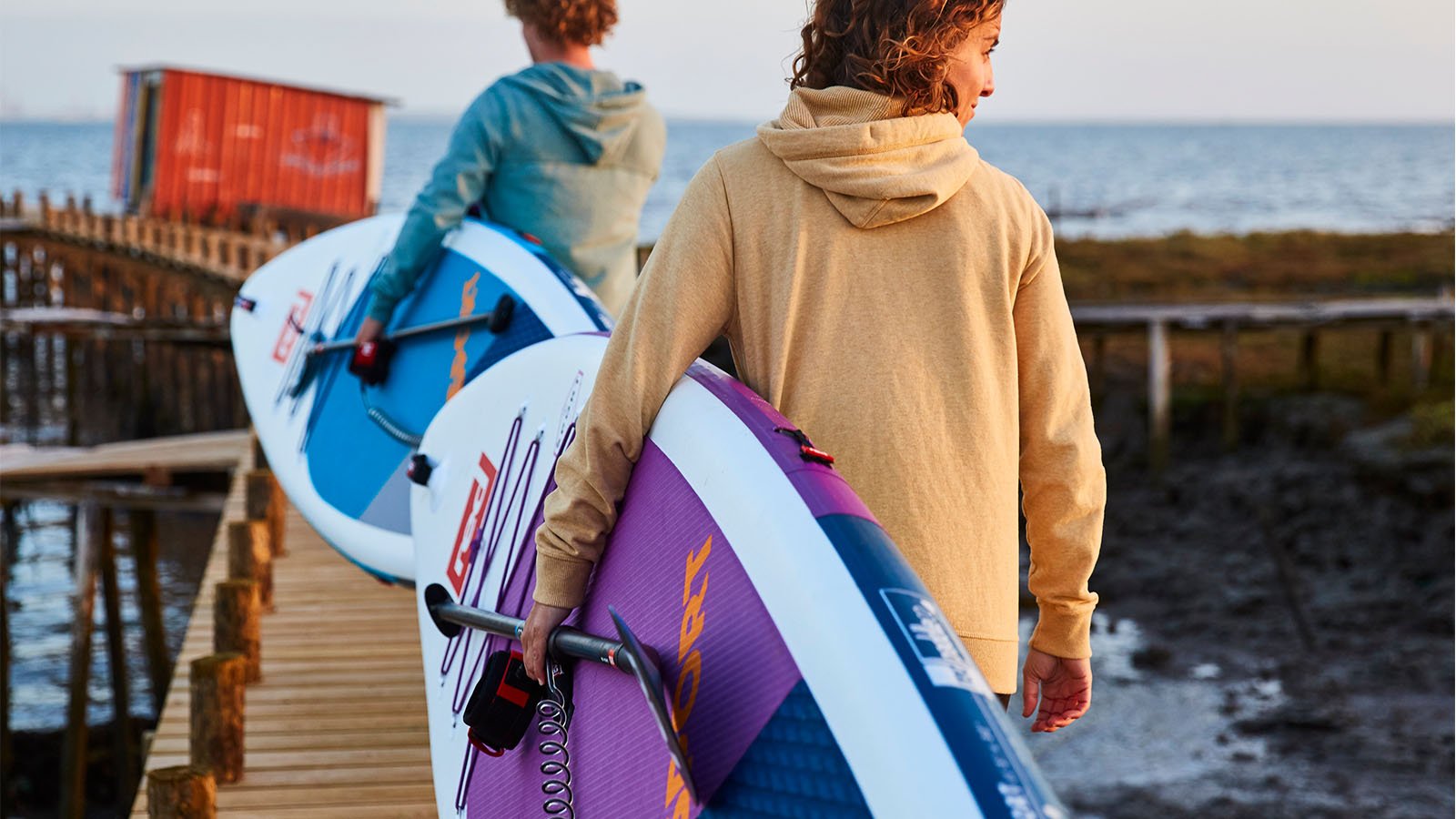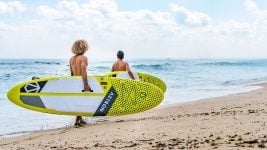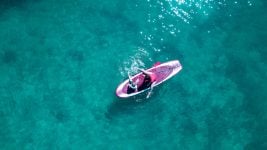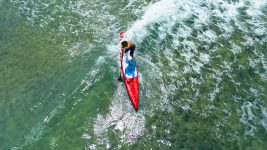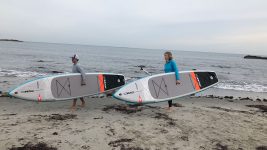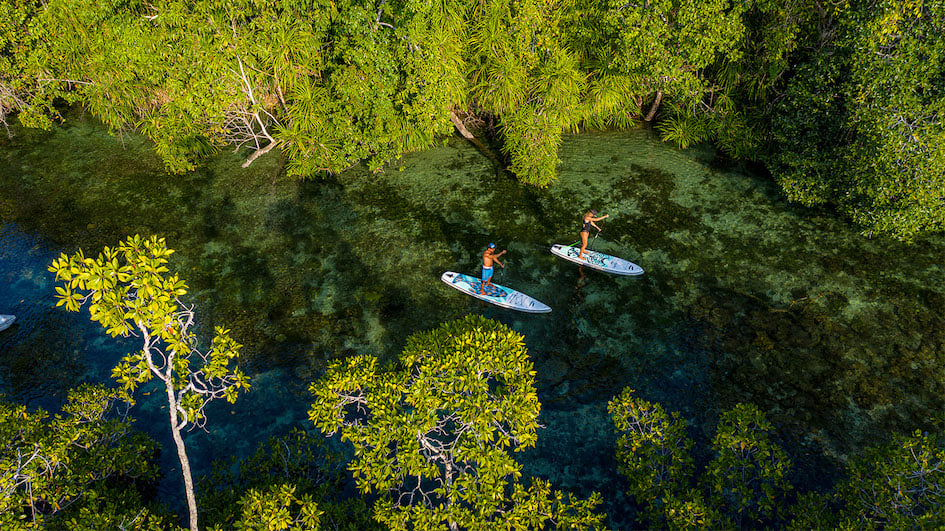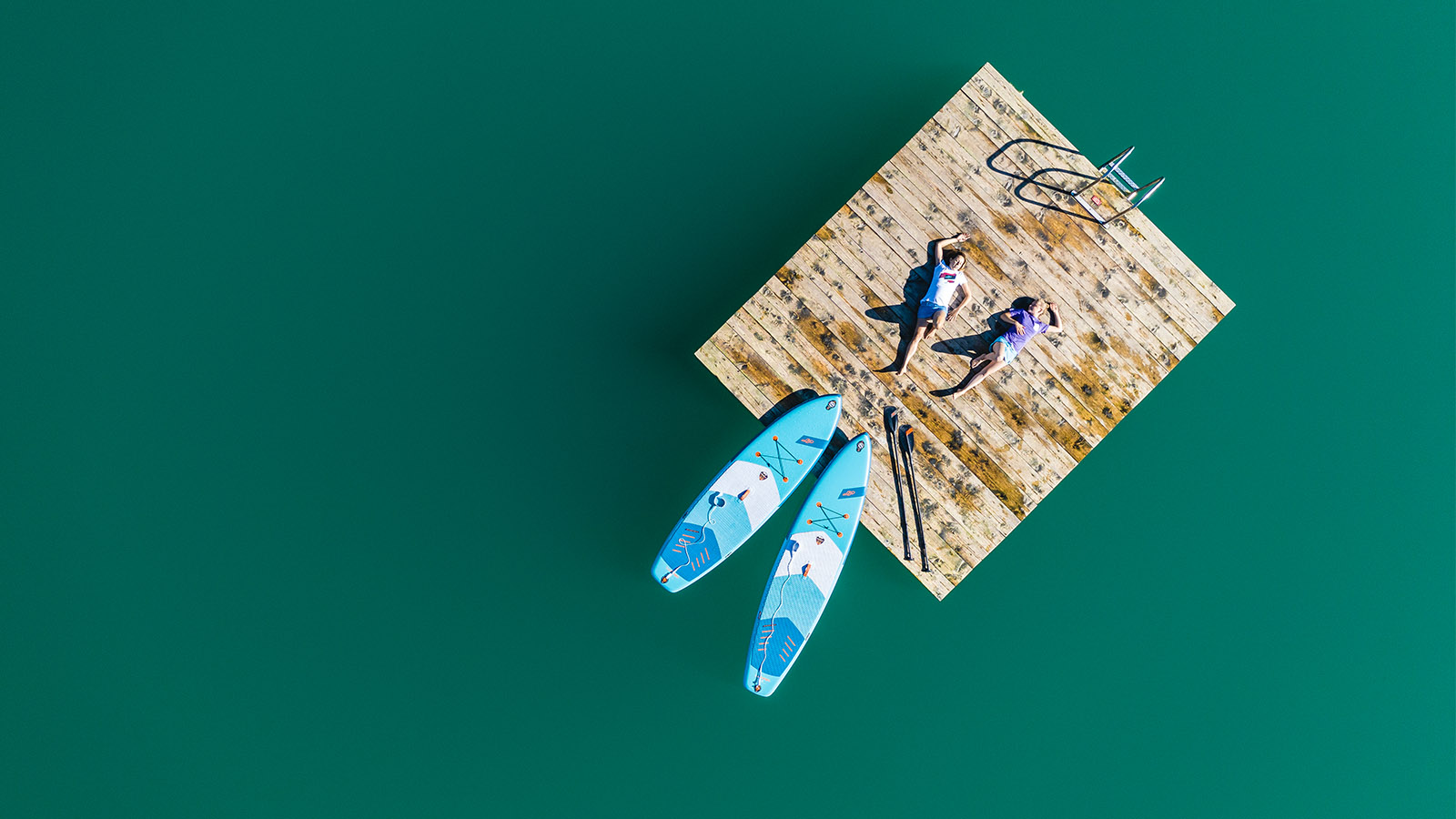
JP Australia 2020 SUP Preview
Retail Buyers Guide: SUP 2020
Brand: JP Australia
Interviewees: Sören Siebeck, Division Manager JP-Australia Europe & Philip Mackenbrock, Marketing

Saleswise, has the SUP market hit the ceiling?
No, we do not think that the SUP market has hit the ceiling, yet. Seeing how many new brands and distribution channels still come up, we think that the market in total is still growing. It is differentiating more though. For the costumer this means that special boards and shapes in different price levels are now available on the market, which may not have been there before. Also, the number of sales points where you can buy a SUP has grown. All this might result in smaller market shares for different brands and shops, although the total number of sold SUPs might still be growing.
The interest in general media and the public outside the micro cosmos of board sports is helping a lot and is still growing. You see the sport of SUP a lot more now in TV shows and movies, adverts for other products, general print and online media. On top of that, health insurances promote the sport as healthy in their publications and promote the sport and subsidize SUP programs for their members. For many people the sport of SUP is still new and many are interested to try it themselves. SUP is still on the way to become a mass product like running shoes, bicycles, skis or snowboards.
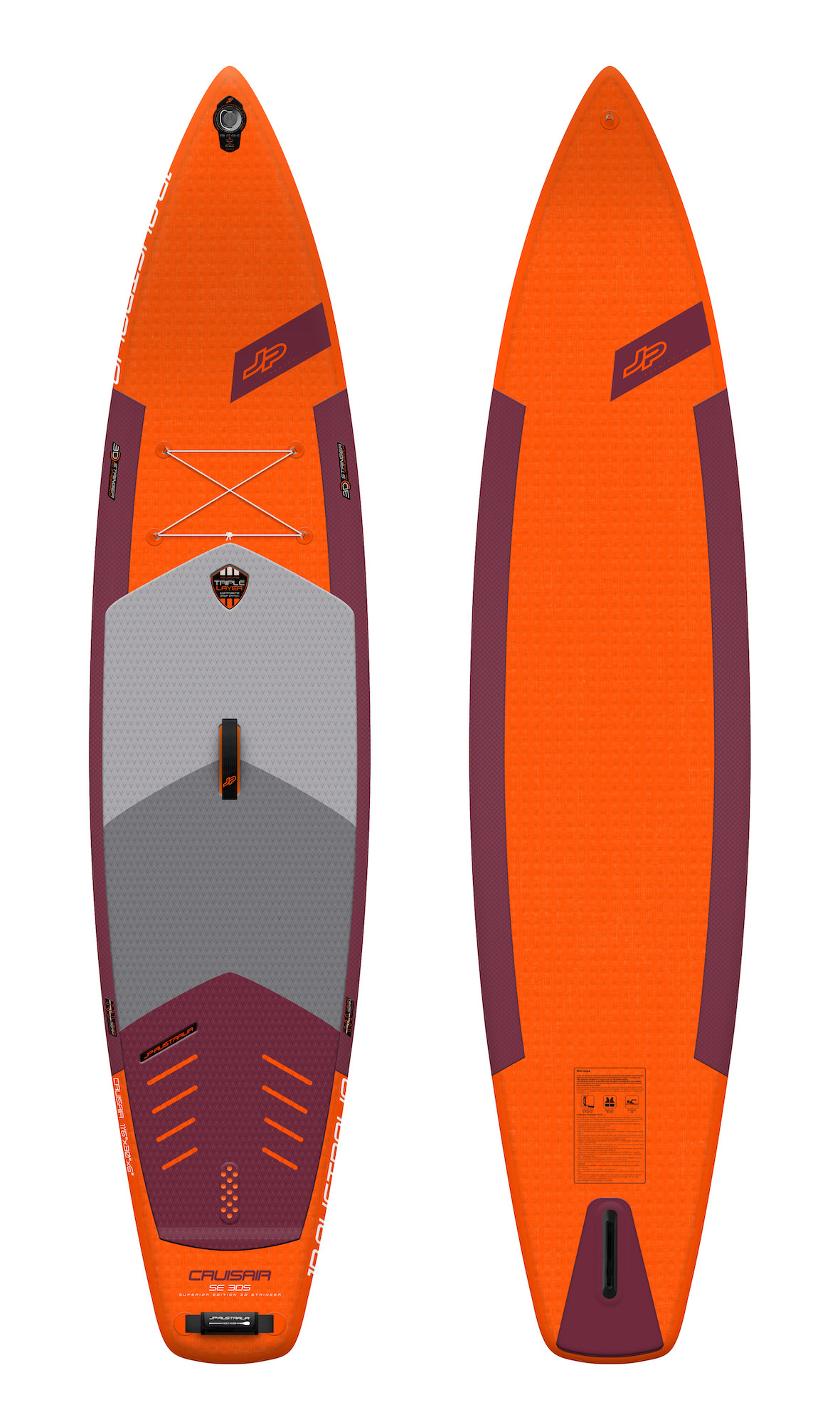
Cruisar
What is your vision of the market segmentation, from the core SUPer on the one hand, to the once-a-year paddler?
As we saw a lot of new paddlers getting into this sport in the last years, the segment of the ones who paddle only a few times a year has probably grown more than the core SUPer. However this growing number of total paddlers will probably lead to more core SUPers. This results in more demand for more boards with special focus (wave sups, sportive touring sups, etc.), more hard boards, higher quality and longer durability products.
So both numbers are growing and at the moment we think that the number of paddlers who paddle “only” a couple of times per year, is still growing faster than the number of core SUPers.
Apart from the entry-level allround model, which categories are trending? (touring, waves, race…)
Touring / Cruising is still very important and still growing. Especially for us being in the medium to high price level this segment is super important. We see that people who want to paddle more and not only try their first steps on a SUP tend to buy touring / cruising shapes.
The demand for wave SUPs is very stable and especially boards which work on flat water and for waves have a good demand (in our range long board, fusion, hybrid).
A lot of interest and demand we see for foiling at the moment. Boards which work well for SUP-foiling and for Wing-foiling and also windsurf foiling (like our JP Foil IPR) gain a lot of it.
Also for multi-purpose boards like our “Foil Slate” – which work with normal fin setup as with a foil, both for different sport, no matter what drives you – we get a lot of demand at the moment.
We definitely see a trend towards foiling and multi-use boards.
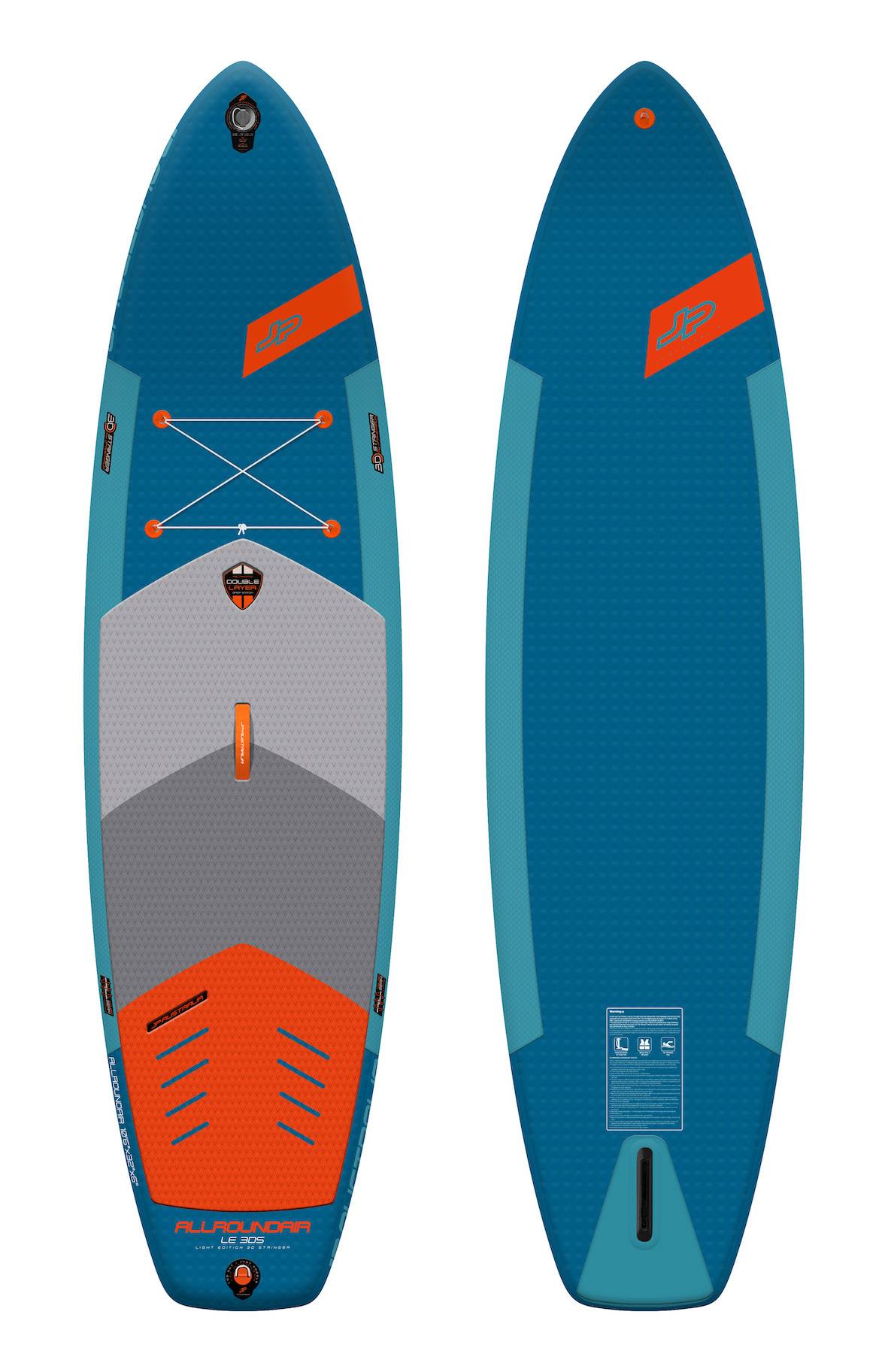
Allroundair
Do you think hardboards can bounce back and regain market shares on inflatables?
Soeren: Hardboards do have a big potential for a lot of costumers. We start seeing more and more people keeping their inflatables pumped up all the time. They store it inflated in their garage and transport it on the roof of their car. This means less effort for some people than inflating, deflating, rolling and unrolling the SUP. Those guys do not need to compromise on the performance of the boards anymore but make use of the advantages of hardboards, if they buy one. The shapers have a lot more options to enhance the performance of hard boards over inflatables. And they have learned a lot during the last years.
Regarding the foiling trend this is fully hardboards for us at the moment. We are working on inflatable boards for this segment as well but at the moment the performance and durability of hard boards is unmatched. But rest assured, we will come up with a proper working inflatable solution. We definitely will only release, when we are convinced the concept is fully working. (This won’t last too long)
What are the main innovations within your 2020 range (inflatables & hardboards)?
Our most important innovation this year, if not in the past 10 years, is actually an almost invisible one. Our welded seams technology. This means that the seams (the connection between the upper and lower deck) are no longer glued together, but mechanically fused by means of a complex heat process. Until now, the seams of all inflatable boards on the market were glued together. A process which, due to the system, cannot last forever. The plasticizers in the adhesive become hard and brittle, UV radiation and high temperatures accelerate this effect. At some point, small channels are created through which the air can slowly escape. A damage that usually cannot be repaired economically. This year, we were the first manufacturer to convert our complete range (except the superlight line) to this technology. This means, the boards are safer, more durable and if you consider how much plastic waste a broken board causes, it is also more environmentally friendly.
This improvement, almost invisible to the non-expert, is in our opinion a milestone in inflatable board technology.
Do you value the foiling market?
The foil market has become very important for us not only for economic reasons. Foiling is one of the most important developments in water and wind sports for years. It enables facets of the sport that were completely unthinkable a few years ago. Windsurfers, stand-up paddlers, surfers and kiters can use one and the same board for all imaginable sports by mounting a foil. For the customers this means much more flexible leisure activities, less dependence on weather conditions and more time on the water.
This may sound candid but don’t you think the mere size of SUPs has impaired their inshop storage, thus leading to the success of online sales?
Of course, the stock situation of the dealer is always a very sensitive aspect. The strength of many shops is their knowledge and experience and maybe to offer the possibility that costumers can try the boards before buying (test boards). Many aspects of the products can be explained a lot better in the shop with the product at hand. The costumer can see the real colors and inspect the different shape details and material details together with the dealer. The stock in the shop is very important for many dealers.
Many costumers go to the shop which they trust, want to explore together with the dealer what is the best product for his purpose of use and leave the shop with the product in their hands. So again, stock is very important for the dealer. Of course he takes some risk taking too much stock at a time if he cannot sell what he calculated. Therefore it is important for him that he can take some basic stock for the start of the season and re-order quickly with the supplier when his stock is getting low. He needs the option to refill his stock. In this business model the supplier/distributor needs to keep some considerable stock and take a big part of the risk of the dealer.
To sum it up: If the dealer takes too much stock at the beginning of the season and cannot sell it during the season, his stock might be a disadvantage compared to pure online shops. If the dealer keeps a well balanced stock, it can be an advantage over pure online shops. Many dealers combine traditional surf shops / SUP shops and online shops to take advantage of both models.
For pure online shops, delivery time is a very important aspect. Therefore many online shops keep some stock themselves to be able to deliver very quickly.
Any piece of advice to brick & mortar retailers concerning their order sorting? (as there is only so much room in their shops and so many SUP categories/models available)
The strength of many dealers is that they know their costumers and target groups. They know about their regional challenges and uniqueness. In areas with a lot of wind many go for wider and maybe thinner boards for more stability. In areas with calm lakes narrower and thicker boards are more famous as they are quicker and stiffer. In those areas you can’t go wrong with CruisAir Shapes like 12´6x31x6 (heavier guys) or 11´6x30x5 (smaller guys, many ladies). Allround shapes are also still very famous but the competition of very cheap boards in the allround shapes 10´6 and smaller is very high.
Best Sellers
Please name and describe your 3 highlight pieces and items that retailers should definitely order.
- JP Allround LE (light edition): our most affordable “welded seam technology” board. The allround shape is still very famous and the welded seams offer additional safety and durability as it lasts a lot longer than glued seams. The pre-lamination of the 2 layers of rails, deck and bottom ensure a very light board. Size 10´6 retails at €699,- / GBP 629,-
- JP Australia CruisAir LE 3DS (light edition 3D stringer): The LE 3DS models also come with the welded seam technology, ensuring extra safety and durability. In addition you get 3D stringers wrapping around the center part of the rails. This makes the boards considerably stiffer It also comes with a tailrail edge for a more efficient water flow leading to a faster speed.
- JP Foil Slate IPR. If you have costumers with a certain level of water sports, who look for a multi use board, you can’t go wrong with the Foil Slate IPR. It works very well as a pure wave SUP, foil SUP, for windsurf foiling, wing foiling and foiling behind a boat. If you want to focus on wing foiling and SUP foiling, you might be better off with a more special board like the JP Foil IPR. If you want to do it all, the Foil Slate is the best weapon.




